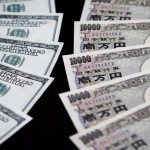 Gold rose to the highest in four months on Thursday following an unexpected move by the Swiss National Bank to remove a cap for the franc against the euro. Traders remained cautious after recent drops in prices of commodities and concerns of sluggish global growth. Copper rebounded from a 5-1/2-year low but was set for more downside.
Gold rose to the highest in four months on Thursday following an unexpected move by the Swiss National Bank to remove a cap for the franc against the euro. Traders remained cautious after recent drops in prices of commodities and concerns of sluggish global growth. Copper rebounded from a 5-1/2-year low but was set for more downside.
Comex gold for delivery in February rose 1.63% to $1 254.6 per troy ounce by 12:06 GMT, having earlier jumped to $1 261.1 an ounce, the highest since September 8th. The precious metal settled almost unchanged on Wednesday at $1 234.5.
Gold edged higher after the SNB shocked markets by removing the minimum exchange rate of CHF1.20 per euro, saying that the depreciation of the euro against the US dollar has led to a weakening of the franc against the greenback as well, thus the cap, which was meant to protect the franc against a too high valuation, was no longer justified. European shares initially tumbled, but later recovered, and the US dollar fell against a basket of major trading peers, sending bullion higher.
Saxo Bank senior manager Ole Hansen said, cited by CNBC: “Gold is gaining from a risk-off situation because nobody expected the Swiss central bank not to keep that cap, and this has created potential big losses in many places and is obviously triggering some flight to safety.”
This comes only a week before an ECB policy meeting where the bank could announce outright money-printing.
Investors also weighted the possibility that the Federal Reserve may not initiate an increase in borrowing costs sooner rather than later amid speculations that weak oil and copper prices may pressure inflation further away from Fed’s 2% target.
Wednesday saw a decline in the dollar against a number of currencies, after US retail sales fell by the most in 11 months in December.
The US dollar index for settlement in March was down 0.27% at 92.095 at 12:06 GMT, holding in a daily range between a nine-year high of 93.300 and 91.495. The US currency gauge lost 0.17% on Wednesday to 92.345. A stronger greenback makes dollar-denominated commodities more expensive for holders of foreign currencies and curbs their appeal as an alternative investment, and vice versa.
Gold has scored a 4% increase since the beginning of the month, however, projections for the full year remain grim. UBS joined Barclays, Goldman Sachs and Societe Generale in projecting lower gold prices. Switzerland’s largest bank said it now expects the yellow metal to reach $1 190, down from its previous projection of $1 200.
Assets in the SPDR Gold Trust, the biggest bullion-backed ETF, marked their first declined for the week and dropped 0.23 tons on Wednesday to 707.59 tons. Changes in holdings typically move gold prices in the same direction.
Investors are also eyeing the political turmoil in Greece, which may lead to the country’s exit from the euro zone should the Syriza party win at the elections scheduled on January 25.
Copper
Copper rebounded from a multi-year low reached on Wednesday on a combination of bottom-fishing, short covering and hedging, but gains were limited by weak demand growth prospects, keeping bias skewed to the downside.
Comex copper for delivery in March rose 2.12% to $2.5585 per pound by 12:06 GMT, having shifted in a daily range of $2.5785-$2.5170. The industrial metal plunged 5.24% to $2.5055 a pound yesterday after it touched an intraday low of $2.4235, the weakest level since July 2009.
The industrial metal also drew support after the Peoples Bank of China reported a larger-than-expected increase in financing last month, with aggregate financing hitting 1.69 trillion yuan, compared to economists projections for 1.2 trillion.
Despite Chinas broadest measure of credit growth topping estimates, data showed that banks extended far less credit in December, with New Loans falling to 697.3 billion yuan compared to expectations for a jump of 885.0 billion. Fanning optimism, the Peoples Bank of China is broadly expected to introduce further monetary easing after it cut interest rates in November as economic growth is headed for under the targeted 7.5%.
Also dragging on prices, core machinery orders in Japan tumbled by an annualized rate of 14.6% in November, whereas analysts had projected a decline of 5.8%. In monthly terms, orders rose 1.3%, well below expectations for 5.0% growth.
The metal was pressured yesterday as oil prices remained near the lowest in almost six years, while the World Bank cut its global growth forecast for the year, citing a “managed cooldown” in China and cutting its forecasts for Japan and Europe.





